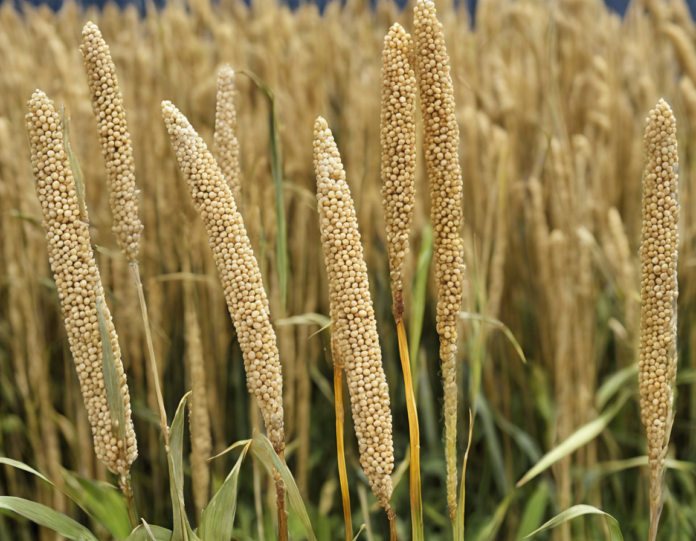Introduction
Foxtail millet, scientifically known as Setaria italica, is a type of millet grain that has gained popularity in recent years due to its numerous health benefits. Originating in China thousands of years ago, this ancient grain is now widely cultivated in India, Africa, and other parts of the world. Foxtail millet is a versatile and nutritious food that offers a range of benefits for those looking to improve their overall health and well-being.
Nutritional Profile
One of the key reasons for the growing popularity of foxtail millet is its impressive nutritional profile. This gluten-free grain is rich in dietary fiber, protein, vitamins, and minerals. A single serving of foxtail millet provides a good amount of carbohydrates for energy, making it a great addition to a balanced diet. It also contains essential nutrients like iron, magnesium, phosphorus, and zinc, which are important for various bodily functions.
Health Benefits of Foxtail Millet
1. Weight Management
Foxtail millet is a low-calorie grain that can help with weight management. The high fiber content in foxtail millet promotes a feeling of fullness, which can prevent overeating and aid in weight loss. Additionally, the complex carbohydrates in foxtail millet are digested slowly, providing a steady release of energy and helping to regulate blood sugar levels.
2. Digestive Health
The dietary fiber in foxtail millet is beneficial for digestive health. Fiber helps to promote regular bowel movements, prevent constipation, and maintain a healthy gut microbiome. Including foxtail millet in your diet can help to support a healthy digestive system and prevent digestive issues.
3. Heart Health
Foxtail millet is a heart-healthy grain that can help to lower cholesterol levels and reduce the risk of heart disease. The magnesium and potassium in foxtail millet help to regulate blood pressure, while the fiber content helps to reduce bad cholesterol levels. Consuming foxtail millet regularly can support cardiovascular health and reduce the risk of heart-related problems.
4. Blood Sugar Control
For individuals managing diabetes or looking to control blood sugar levels, foxtail millet can be a valuable addition to the diet. The complex carbohydrates in foxtail millet are digested slowly, leading to a gradual increase in blood sugar levels. This can help to prevent spikes and crashes in blood sugar, making it a diabetes-friendly grain.
5. Bone Health
Foxtail millet is a good source of calcium, magnesium, and phosphorus, which are essential for bone health. Including foxtail millet in your diet can help to strengthen bones, prevent osteoporosis, and support overall bone density. This can be particularly beneficial for older adults and individuals at risk of bone-related conditions.
How to Incorporate Foxtail Millet into Your Diet
There are various ways to enjoy foxtail millet as part of a healthy diet. Here are some tips on how to incorporate this nutritious grain into your meals:
1. Cook it as a substitute for rice: Use foxtail millet as a healthier alternative to white rice in dishes like biryani, pulao, or fried rice.
2. Make millet porridge: Boil foxtail millet with milk or water to make a delicious and nutritious porridge for breakfast or as a snack.
3. Add it to soups and stews: Use foxtail millet as a hearty addition to soups, stews, or casseroles for added texture and nutritional value.
4. Prepare millet salad: Combine cooked foxtail millet with fresh vegetables, herbs, and a dressing of your choice to create a healthy and flavorful salad.
5. Bake with millet flour: Use foxtail millet flour as a gluten-free alternative in baking recipes for muffins, bread, cookies, and more.
Frequently Asked Questions (FAQs)
1. Is foxtail millet gluten-free?
Yes, foxtail millet is naturally gluten-free, making it a safe grain option for individuals with gluten sensitivities or celiac disease.
2. Can foxtail millet help with weight loss?
Yes, the high fiber content in foxtail millet can promote satiety, regulate blood sugar levels, and aid in weight management.
3. How does foxtail millet support heart health?
Foxtail millet is rich in magnesium and potassium, which can help regulate blood pressure and reduce the risk of heart disease.
4. Can diabetics consume foxtail millet?
Yes, foxtail millet is a diabetes-friendly grain due to its slow-digesting complex carbohydrates that can help control blood sugar levels.
5. What are some other health benefits of foxtail millet?
Foxtail millet is also beneficial for bone health, digestive health, and providing essential nutrients like iron, phosphorus, and zinc.
In conclusion, foxtail millet is a nutrient-dense grain that offers a wide range of health benefits, from weight management and heart health to blood sugar control and bone strength. By incorporating foxtail millet into your diet in various ways, you can experience its nutritional advantages and support a healthier lifestyle. Start enjoying the goodness of foxtail millet today and reap the rewards of this ancient grain for your well-being.












